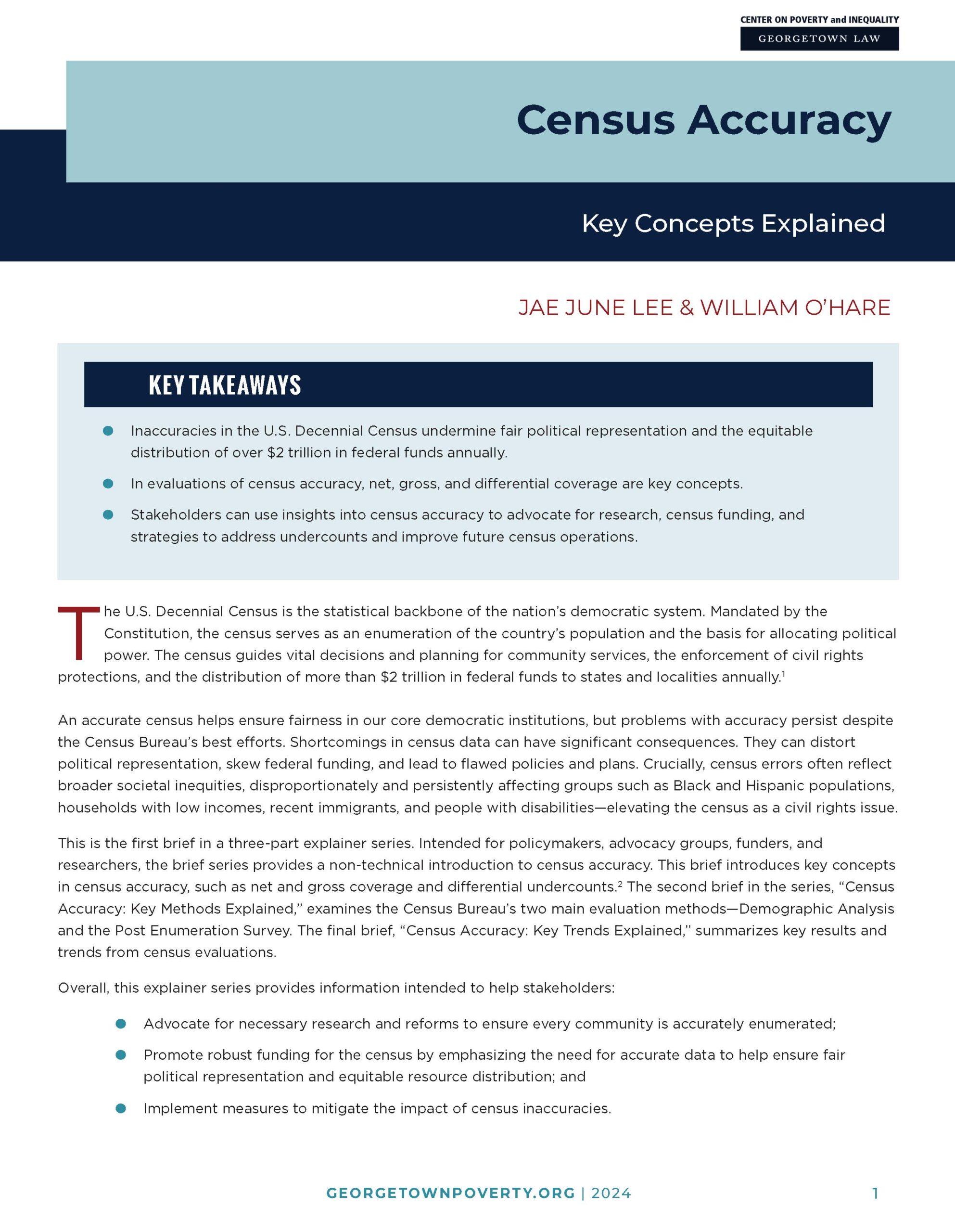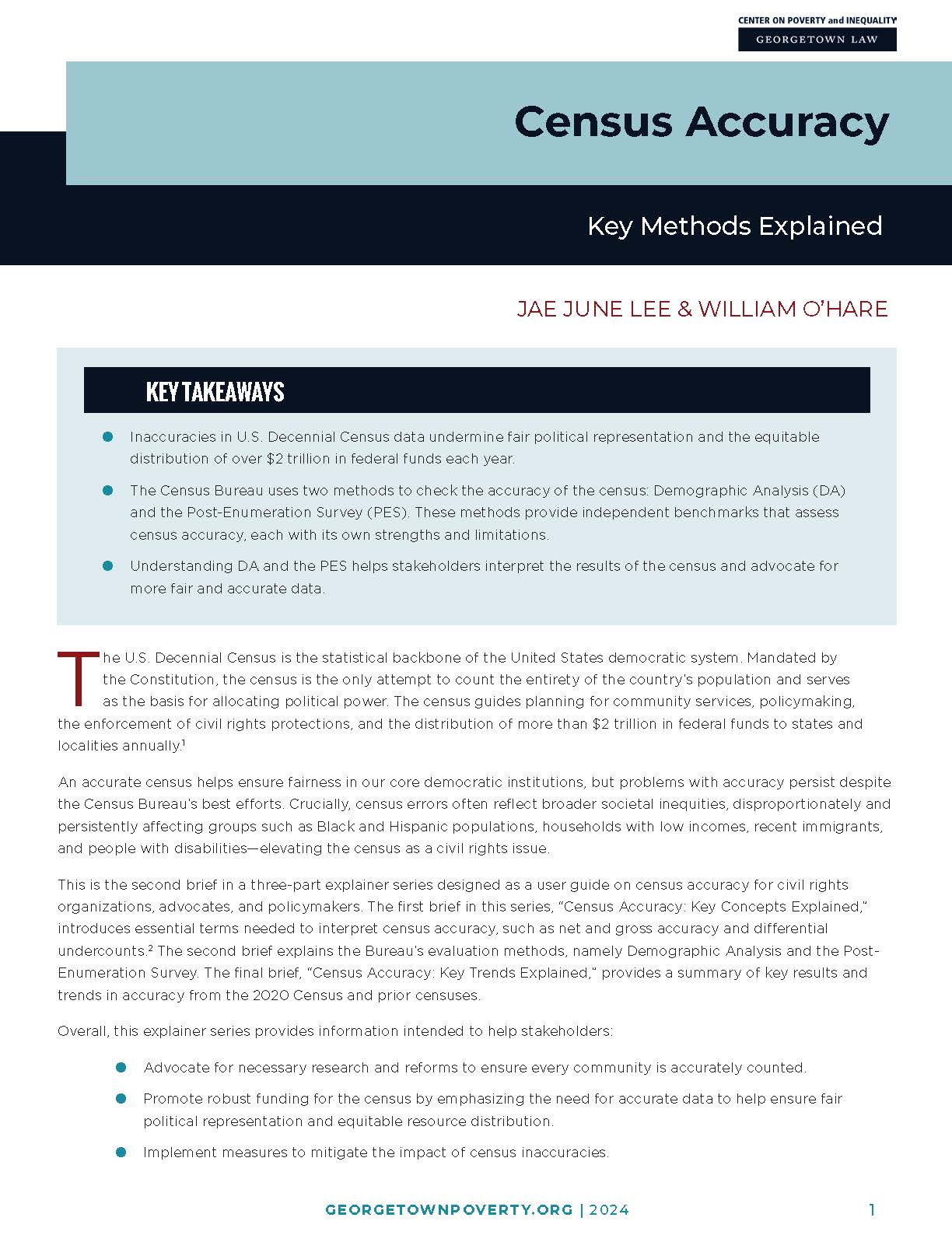A Census Accuracy Guide for Advocates & Policymakers
An accurate census ensures fair political representation and distribution of over $2 trillion in federal funds to states and local governments each year. But certain communities–including Black and Hispanic/Latino communities, low-income households, recent immigrants, and people with disabilities–are regularly undercounted. These undercounts are hidden behind the Census Bureau’s success at improving the overall count.
An unfair count has real consequences for undercounted groups impacting funding, political power, and resources–making census accuracy a civil rights issue.
This series is designed as a user guide on census accuracy for civil rights organizations, advocates, and policymakers. By learning the key concepts and methods, advocates will be better equipped to interpret census results and push for improvements that lead to a fairer count.
- Census Accuracy: Key Concepts Explained, covers essential concepts, such as net and gross accuracy and differential undercounts.
- Census Accuracy: Key Methods Explained, describes the Bureau’s main evaluation methods: Demographic Analysis and the Post-Enumeration Survey.
- Census Accuracy: Five Key Results & Trends Explained, summarizes accuracy trends from the 2020 Census and previous counts.
This series is intended to help advocates and organizations:
- Advocate for necessary research and reforms to ensure every community is accurately counted.
- Promote robust funding for the census by emphasizing the need for accurate data to help ensure fair political representation and equitable resource distribution.
- Implement measures to mitigate the impact of census inaccuracies.



